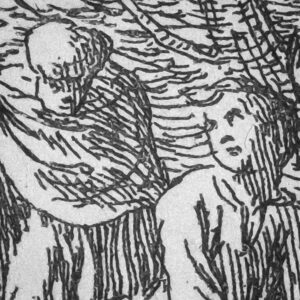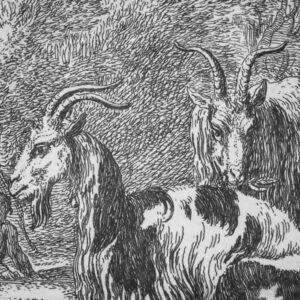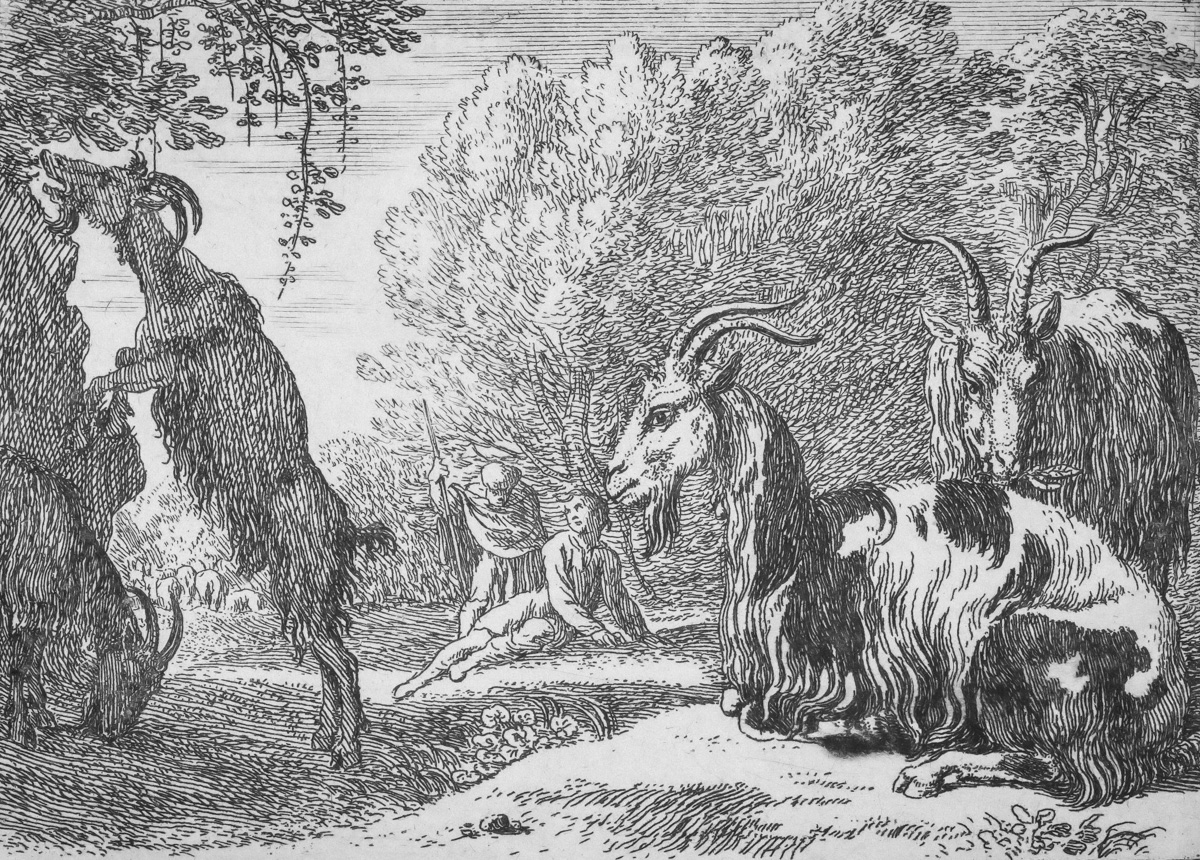Buried on the Homestead

Dr. Ryan Hanning
I buried my youngest daughter’s yearling goat this morning. Despite our best efforts, death always seems to find a way. It is an ever-present reminder that life is short and surprisingly fragile and that we can’t control as much as we would like. This truth has been perhaps the steepest and most uncomfortable learning curve of our homesteading experience to date — a curve that was the normative reality just a few generations ago, when people were closer to the land and lived in proximity to the food that nourished them.
We are relative novices when it comes to homesteading, with just over twelve years of experience with goats. We manage to keep the vast majority alive and healthy. Over the years we have acquired a decent bit of knowledge and amassed a veritable pharmacy, which we can deploy with some efficiency.  We also don’t hesitate to call in the help of local farm vets whose knowledge and skill is worth the cost of a visit. But nonetheless, animals still die, and they die often. Sometimes they die suddenly without warning, and sometimes after a week of late-night infusions and a fair number of prayers. Predation, weather, disease, and, yes, our own stupidity, all contribute to a sobering fatality rate. In other worthy endeavors, a dozen years may provide some degree of expertise, but it will likely take a lifetime (or two) to become capable goatherds. Even then, death will remain in the natural order of things.
We also don’t hesitate to call in the help of local farm vets whose knowledge and skill is worth the cost of a visit. But nonetheless, animals still die, and they die often. Sometimes they die suddenly without warning, and sometimes after a week of late-night infusions and a fair number of prayers. Predation, weather, disease, and, yes, our own stupidity, all contribute to a sobering fatality rate. In other worthy endeavors, a dozen years may provide some degree of expertise, but it will likely take a lifetime (or two) to become capable goatherds. Even then, death will remain in the natural order of things.
Ever since we began raising livestock, the passing of life has become commonplace and, simultaneously, more scandalous. It is a common but still unnatural separation from our work and the animals we care for and depend on. In a way, every death of an animal leads to a brief encounter with our own mortality, and an opportunity to appreciate the gift of life. We also acutely feel the loss as a failure of our own stewardship and response to God’s call to “till and guard” the garden.
In a way, every death of an animal leads to a brief encounter with our own mortality, and an opportunity to appreciate the gift of life.
For our not-so-distant ancestors, dealing with the death of livestock, or even crop failure, was a common and shared experience. Life hung in a precarious balance, and the question was not if animals would die, but if their demise would be on your terms or on something else’s. Death was near, and it could either provide you with life and sustenance, or it could mean a winter without milk or meat. Death was imminent, and with it an appreciation of the fragility and preciousness of life.
Today, we have sanitized death to our detriment. Most people in the “developed” world don’t raise livestock, nor do they slaughter their own meat. Death is relegated to a killing room, far away from the store that sells the meat, or the table on which it is eaten. The care and processing of animals are now left to enormous operations that assuredly have a much higher unintended fatality or “loss” rate than our homestead. Death hasn’t been defeated; it has been moved from our view and with it the appreciation of the value of life. Part of our family’s move to the land has been exposing ourselves to this forgotten truth — and in doing so becoming more grateful for the animals who provide for our nourishment.
As I continued to dig, my shovel hit a large piece of limestone and my introspection momentarily turned to anger. This lovely little creature would have grown and provided a gallon of milk each day for our family. Her offspring would have provided both milk and meat for my children, and her offspring’s progeny might even have fed my children’s children. Death on the homestead always comes at a cost, but usually we get to enjoy the fruits of our labor, at least for a while. This time there is nothing to show for our work. I can’t help but feel wasteful.
 I finished digging the shallow grave and unceremoniously completed the job. I walked out of the treeline and back up the hill to check on the other goats. As I walked, the anger slowly left me. I looked at the rest of the herd. I looked out over the land where they foraged.
I finished digging the shallow grave and unceremoniously completed the job. I walked out of the treeline and back up the hill to check on the other goats. As I walked, the anger slowly left me. I looked at the rest of the herd. I looked out over the land where they foraged.
There is something buried deeper in this ground, in this homestead, in this piece of earth that we share with these animals. I walked, and I looked, and I found myself more at peace. I found myself more thankful than before. And I found myself more committed to being a steward, entrusted both with life and with death — a steward who is called to be worthy of all the gifts that his family has been given.


